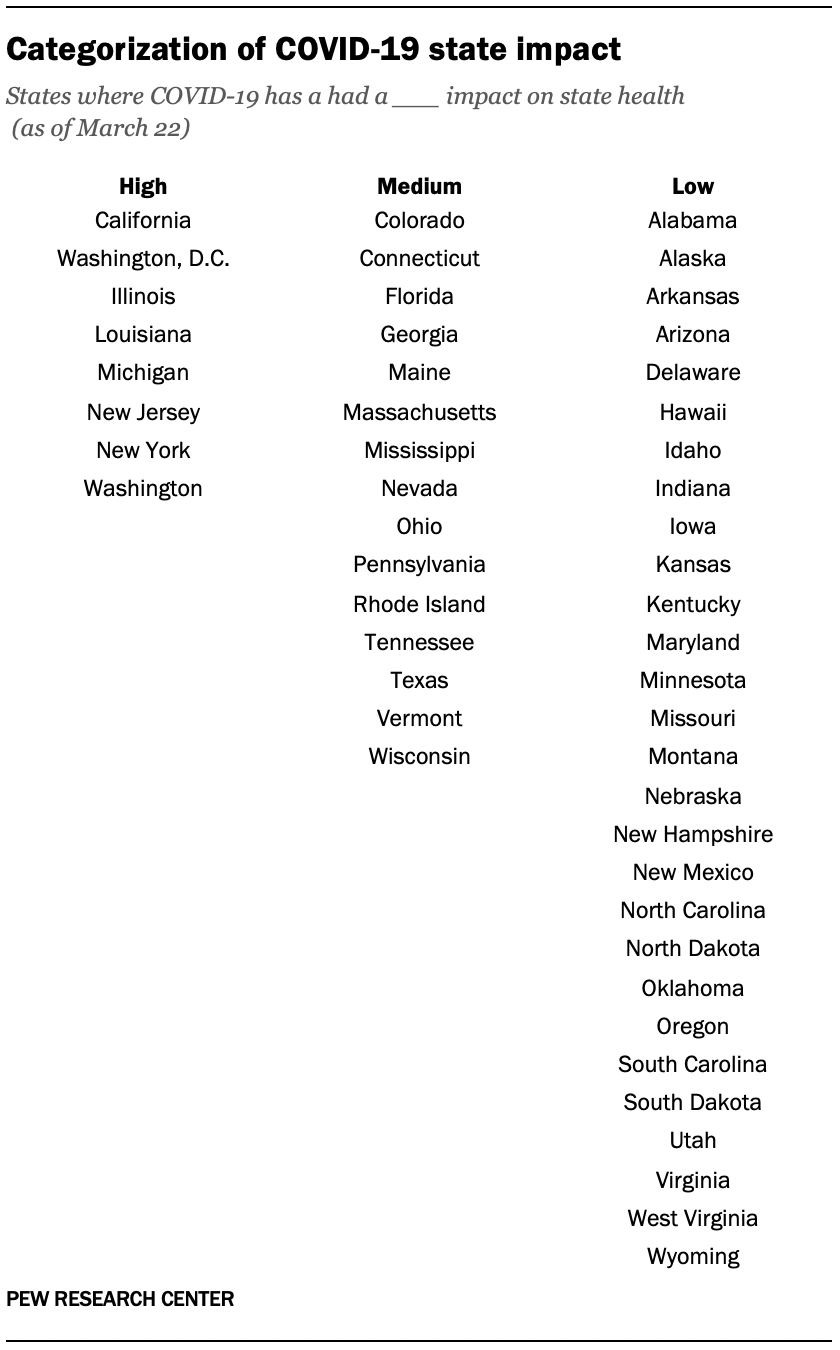Categorization of COVID-19 state health impact in this report
 This report uses a measure of state-level impact of COVID-19. States and the District of Columbia are categorized as having experienced a high, medium or low impact based on a combination of the total number and the per-capita number of people who have tested positive for the novel coronavirus (as of March 22).
This report uses a measure of state-level impact of COVID-19. States and the District of Columbia are categorized as having experienced a high, medium or low impact based on a combination of the total number and the per-capita number of people who have tested positive for the novel coronavirus (as of March 22).
States were classified as “high” if they had either 1,000 or more total cases or they had more than 100 cases per million residents as of March 22. “Low” states had both fewer than 60 cases per million residents and less than 300 cases overall. The remaining states were classified as “medium” impact.
Data for positive cases of COVID-19 by state were taken from The COVID Tracking Project (downloaded on March 23).
Defining income tiers
To create upper-, middle- and lower-income tiers, respondents’ 2018 family incomes were adjusted for differences in purchasing power by geographic region and for household size. “Middle-income” adults live in families with annual incomes that are two-thirds to double the median family income in our sample (after incomes have been adjusted for the local cost of living and for household size). The middle-income range for this analysis is about $40,100 to $120,400 annually for a three-person household. Lower-income families have incomes less than roughly $40,100, and upper-income families have incomes greater than roughly $120,400.
Based on these adjustments, among respondents who provided their income, 33% are lower income, 45% are middle income and 22% fall into the upper-income tier.
For more information about how the income tiers were determined, please see here.


